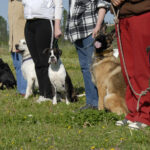Alternative and agro-tourism enterprises are allowing farmers and ranchers to earn higher profits by replacing or supplementing traditional farm operations with innovative on-farm or on-ranch ventures, according to Kiki Chvosta and Bonnie Reed of Allied Insurance/
Nationwide. As a result, insurance agents and brokers need to be aware of the potential exposures, and be knowledgeable so that they can advise their clients, they said.
Chvosta and Reed recently presented a breakout class, “Agro-Tourism: A Growing Industry,” at the Insurance Skills Center’s 19th Annual Agribusiness Conference, held in March in Sacra-mento, Calif. During the presentation, they noted that agro-tourism is one of the fastest-growing tourism options in the recreational industry. According to a U.S. Forest Service survey, 62 million citizens visited a farm or ranch in 2001.
Fun on the farm
Among the activities that could be called agro-tourism include: hay rides, weddings, pony rides, cut your own Christmas tree, mazes, petting zoos, pumpkin patches, fruit stands, bird watching, cooking clinics, hiking, paint ball, whitewater rafting, gather your own eggs, and the list goes on.
“A lot of farmers may be doing the activity already and you just don’t know about it,” Chvosta said. The appeal for consumers, they said, is that agro-tourism provides an educational, family activity that is close to home and helps people reconnect with their roots.
“Since 9/11, a lot of people look for things they can do close to home. It’s tremendously popular. People who never thought of visiting the farm are doing it with the family,” Reed said.
Farmers enjoy hosting the activities because of the additional financial benefits. “Get real, they want to make money 12 months out of the year,” Reed added. The worry among insurers is that “what you think may not be a big scare turns out to be a tremendously scary event,” she said, noting that farmers need to evaluate health and safety concerns.
Weighing the risks
To aid customers, agents should advise insureds interested in agro-tourism to check into zoning restrictions, local ordinances, neighborhood impacts, and compliance with the Americans with Disabilities Act, and then evaluate whether the costs outstrip the gains. “Farmers need to look at how much it costs for the endeavor,” Chvosta said.
“They need to think about the exposures other people are bringing to their property,” Reed added.
To mitigate some loss potential, farmers can have liability waivers, post boundaries that indicate ‘no trespassing,’ establish visitor areas, post safety rules, keep implements away from visitors, provide hand washing facilities and remove unfriendly animals from public access.
“Farmers also should decide whether they will allow outside pets on their property. Visitors want to bring their dogs; they’re going to the country,” Reed said.
It also is important to think about parking. Where will people park? Will it be along the road? Do the neighbors approve? Will buses need to load and unload? Make sure there is visibility around vehicles. And the route should be free of potholes, they said.
To further make the farm safe, the insureds also should have smoke detectors and charged fire extinquishers onsite, block off bodies of water, plan convenient transportation and establish an emergency plan. For events such as music concerts, it’s a good idea to call emergency medical personnel ahead of time to make them aware of the event. Security and sanitary restrooms also should be provided. And be sure to bar visitors from non-viewing animals and safely store pesticides and other poisons, they said.
“People have the Disney syndrome,” Reed noted. “They’ve paid a price and expect to be taken care of. But don’t assume people have common sense. Bad things do happen.”
For example, during a hay wagon ride, someone could slip on the hay. A hay bale could fall on a child. Or someone could get raped or a fire could start in a maze.
Safety ambassadors
Potential risks exist, so it is important for farmers and their employees to be aware of safety concerns. Conduct safety education pro-grams with employees, Chvosta recommended. “There’s vicarious liability. Your employees are your ambassadors and need proper training,” she said. “One of the biggest things for farmers to learn is how to hire good employees.”
Insurers want to know if the farmer can hire enough employees to take care of the area. Workers are usually seasonal, so farmers should have an orientation and training program that covers emergency situations, as well as the event. Employees also should understand what constitutes safe and healthy conditions, they said.
Finding coverage
With all the risks inherent in agro-tourism, Reed and Chvosta said farmers are unlikely find coverage for the activities in the traditional
market.
The standard market may cover fruit stands, field tours, hay rides, hunting, fishing, weddings, pumpkin patches, bird watching, hiking and trail rides, they said. But agents should seek out specialty markets for tailored coverage, underwriting expertise, loss control services and claim handling capability. Risk retention groups also may have buying power for a specific need, they added.
Agro-tourism can be fun, as evidenced by its growing popularity. But remember, “Farmers have huge liability risks—not just safety but monetary,” Chvosta said.
Topics Agribusiness Training Development
Was this article valuable?
Here are more articles you may enjoy.


 JPMorgan Client Who Lost $50 Million Fortune Faces Court Setback
JPMorgan Client Who Lost $50 Million Fortune Faces Court Setback  Grand Jury Indicts ‘Hole in Won’ Owner on Prize Insurance Fraud Charges
Grand Jury Indicts ‘Hole in Won’ Owner on Prize Insurance Fraud Charges  US Dog-Related Injury Claims Hit $1.12 Billion in 2023: Triple-I, State Farm Report
US Dog-Related Injury Claims Hit $1.12 Billion in 2023: Triple-I, State Farm Report  Cargo Owners in Baltimore Disaster Face ‘General Average’ Loss Sharing, MSC Says
Cargo Owners in Baltimore Disaster Face ‘General Average’ Loss Sharing, MSC Says 


